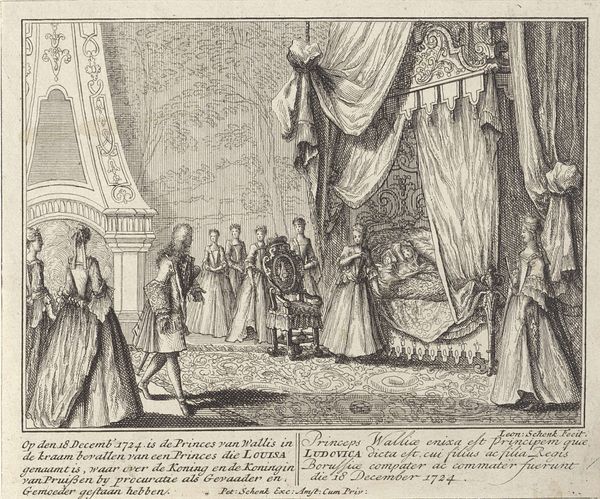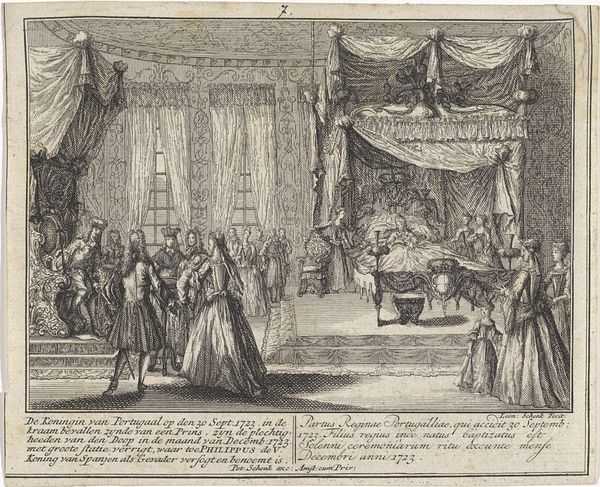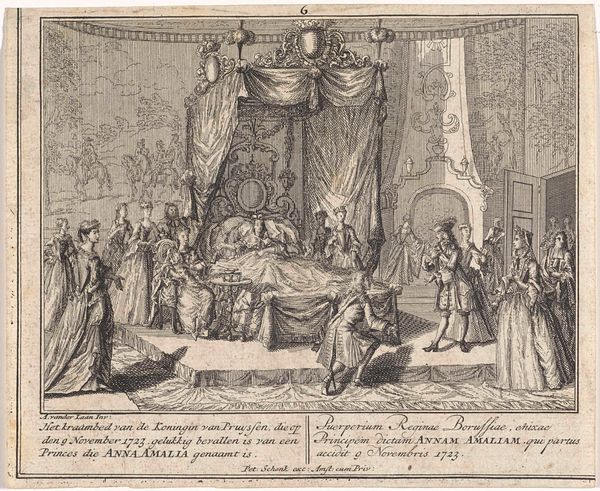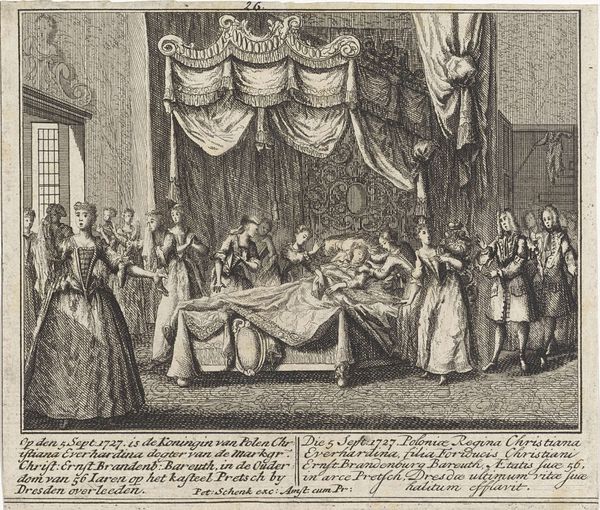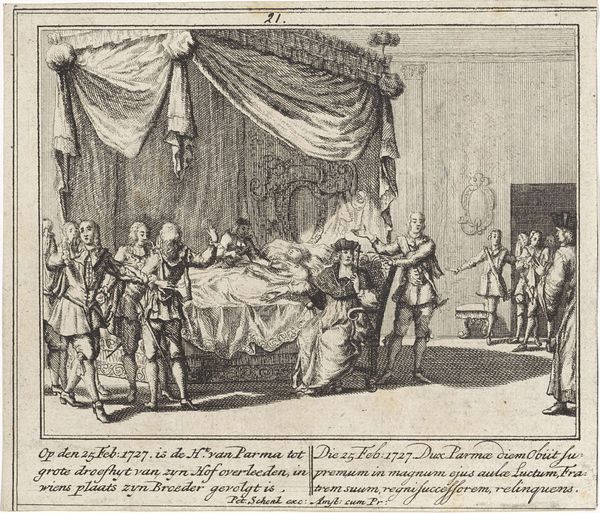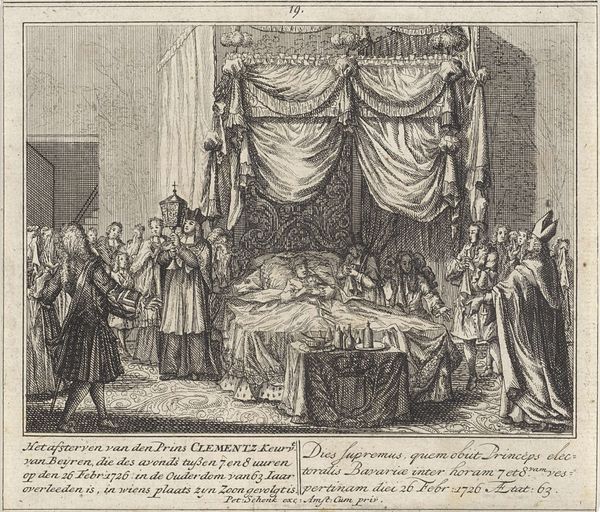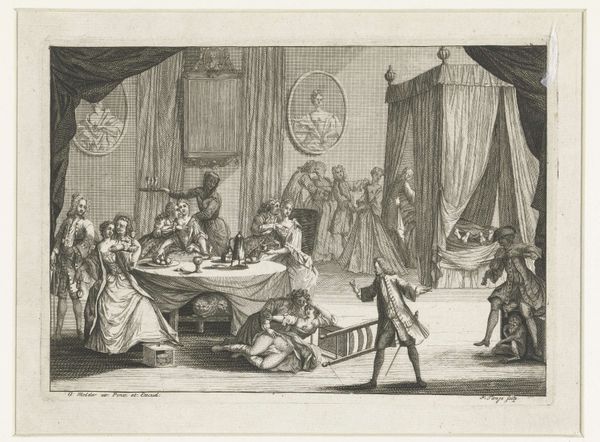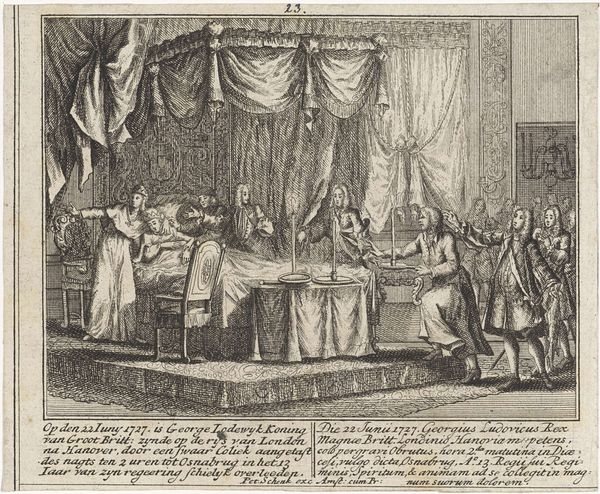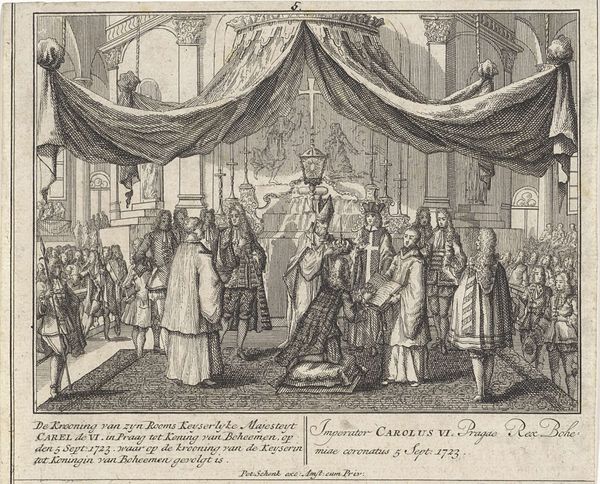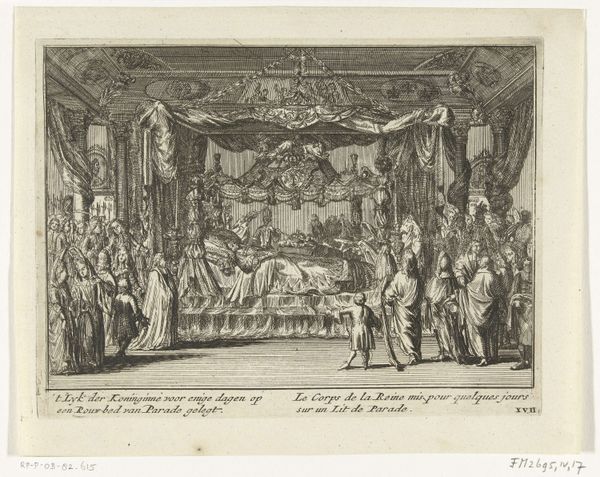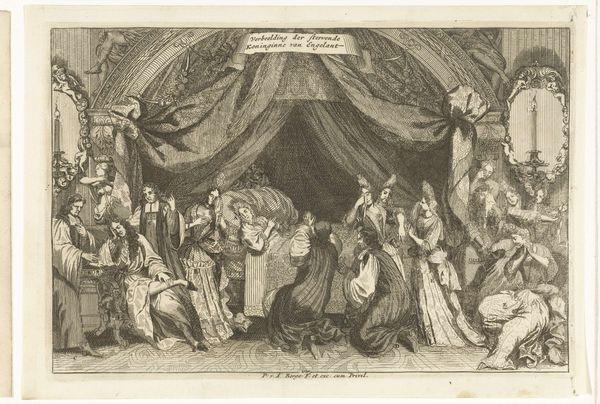
engraving
#
portrait
#
baroque
#
genre-painting
#
history-painting
#
engraving
Dimensions: height 154 mm, width 187 mm
Copyright: Rijks Museum: Open Domain
Curator: Let's delve into this fascinating engraving, “Maria Lesczinska in het kraambed,” crafted by Leonard Schenk around 1727 and held here at the Rijksmuseum. It depicts the Queen of France, Maria Lesczinska, in childbed. Editor: My initial impression is one of quiet, formal drama. The stark contrast and meticulous detail create an almost clinical observation of a very personal moment. I am drawn to the sharp details; they carry my attention directly to key focal points, but not without considerable mood-building within the space created with lines and depth. Curator: Indeed. As a genre scene intertwined with historical documentation, the composition meticulously balances realism with the ideals of Baroque artistry. Note the clear division between the intimate space surrounding the Queen and the courtly figures positioned towards the right— a physical manifestation of the social dynamics at play. Editor: The strategic distribution of light and shadow, so expertly applied to each contour, draws your eye and creates volume where little exists. Take, for instance, how line variations across the Queen’s face communicate pain versus fatigue, offering multiple perspectives in this scene that also carries themes of power and royal obligation. The texture almost makes you think the figures will step right out of their world into the real. Curator: Precisely. Schenk, likely working from an earlier painting or design, had the role of not only artist but also reporter, conveying an event of political significance to a wider public through print culture. It's important to view this work within the context of the early 18th century when printmaking served as both a disseminator of information and an influencer of public sentiment. Editor: It certainly illustrates how aesthetic conventions could subtly reinforce social structures, don't you think? I keep looking at this and appreciating how art allows us to experience the emotional weight carried in line and form, especially knowing that each cross-hatched segment also contributed to a network that bound a society to certain cultural perspectives. Curator: That's very astute. When viewed in this light, it presents a window onto the period, inviting us to engage with its artistic conventions and ponder their impact on our interpretations. Editor: It makes you wonder how much intention lies beneath each stroke of the burin. A truly worthwhile piece for contemplation.
Comments
No comments
Be the first to comment and join the conversation on the ultimate creative platform.
